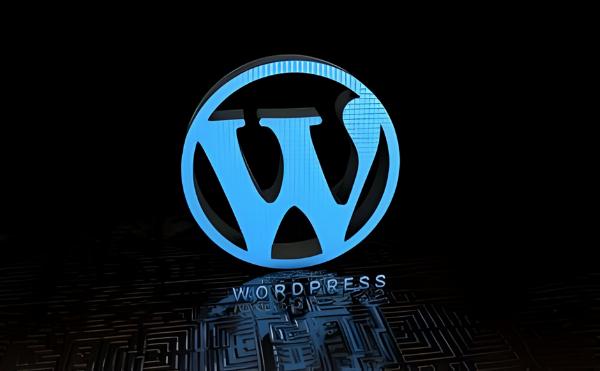 Content Gap Analysis – Find What Competitors Are Missing!
Content Gap Analysis – Find What Competitors Are Missing!
The Beginner's Guide to Website Development
Written by janet » Updated on: June 17th, 2025

Imagine entering a massive digital city where every building is a separate website with its own purpose and design. Imagine becoming an architect in this vast information city instead of a visitor. Welcome to website development, the thrill! Start building your digital domain with this beginner's guide. Website design opens us unlimited opportunities for sharing your passion, skills, or business. In this article, we'll teach you how to convert that blank digital canvas into a masterpiece that draws international visitors. Join us on this exciting quest to turn ideas into reality, one pixel at a time.
1. Web Development
How are websites made?
Websites are files and code on a computer connected to the Internet. Chrome, Firefox, or Safari load pages. This is the client. These two form the "server-client model."
In real life, a friend sends you a humorous movie link. When you click the link, your browser (client) requests the video file from the video website (server). The website server transfers the file to your PC when requested.
Clients are the "front end," and servers are the "back end." Front end web developers build client-side features, whereas back-end developers develop server-side features. They understand both front-end and back-end technologies and use the "full stack" of programming technology.
Understanding their differences can help you choose one for your career. Discuss the differences between front-end, back-end, and full-stack web development.
How is front-end development done?
Front-end developers produce website content. This group can run menus, buttons, and animations on a client's computer. Front-end developers use HTML, CSS, and JavaScript. HTML builds a website's structure, CSS changes its appearance, and JavaScript adds interactivity.
How is back-end development done?
Back end developers work on websites' back ends. This includes managing web servers, databases, and data analysis, which site visitors don't see. Back end authors can use SQL and Python to control website functionality.
What is the meaning of "Full Stack" Stuff?
Website developers who use the "full stack" of tools are termed "full stack developers."
There's no predetermined time to learn full-stack development, but this versatile work is easier. Tech fans at full-time schools can learn job-related skills in three to six months. Still, those who want the breadth of information a degree provides should plan to study for at least four years.
What do full stack developers do, and are they accountable for what?
Full stack web developers handle various website tasks. Some examples include:
• Website front-end creation
• Creating user interfaces and experiences
• Creating technical documentation
• Website structure creation
• Implementing data protection rules
• Setting up servers and files
• Optimizing mobile devices across platforms
2. Get the things you need to begin.
Basic Computer Specifications
Web creation can begin on any Windows, macOS, or Linux machine. The basics of writing are:
• Apple Silicon CPU or Intel i5 or i7 processor on subsequent Macs
• A Full HD display or laptop with a 1920x1080 resolution and 8GB of memory is recommended.
Basic Text Editor
You'll need a text editor to organize your code. Many free options are available to start.
Notepad ++ is a nice text editor for beginners, but only on Windows. Atom is another amazing Linux, Mac, and Windows option.
The browser's
coding requires a browser therefore, you're reading this, you probably have one! Installing multiple browsers enables you to make sure your site looks excellent on all devices; therefore, you should have several. Popular browsers include Chrome, Safari, Edge, Firefox, Brave, and Opera.
Local Web Server
A local web server lets you test code on your computer without putting it online. You can test layouts, scripts, and features while building the site.
XAMPP runs servers on Mac, Windows, and Linux. Other options include MAMP, which works solely on Mac and Windows.
Graphic editors
Developers can use graphics editors to create and modify website graphics. Adobe Creative Suite is the industry standard, but inexperienced designers may find the monthly charge too high. Check out GIMP, a free Photoshop, and Inkscape, a free Illustrator for vector graphics.
3. Understand how front end development works from the ground up
Front-end writers make the site look good when loaded. They create and build all visible website elements. This list includes languages all front-end writers should know before their first job.
HTML
HTML is an acronym for Hyper Text Markup Language. Coders can create a website's fundamental layout and design. HTML files instruct browsers on how to display text, lists, and images.
HTML is easy to learn and may help beginners start coding. This is a crucial tool for web developers that all websites start with. Dynamic web content is created using JavaScript on modern websites. Report Although HTML is an ancient technology, some websites still use it.
Are you looking to learn this "building block" programming language? HTML learning strategy.
CSS lets you style HTML elements on the screen. CSS can help websites seem amazing on all major devices. Layout, colors, fonts, and page effects can be changed.
CSS
HTML and CSS let you create and style websites. It is complex but easy to grasp. Anyone who wants to develop beautiful, mobile-friendly websites must master CSS, since it controls how an HTML page looks to users.
JavaScript
Every front-end web developer needs JavaScript. JavaScript, HTML, and CSS are client-side languages for dynamic, flexible web pages. It's easy to learn and flexible so developers may work on any website design or function. Writing in JavaScript is an excellent approach to learning to code because many of your required skills are also useful in Python and Java.
4. Learn more front end development tools
Before starting large programming projects, seek out front-end development tools to organize and manage code writing.
Package managers
Tool and dependency packages can be installed via package managers for front-end development. Dependencies are external software that aids the program.
Make Tools
Some web development can be automated using build tools. These tools are handy for small, risky tasks like altering text strings and moving or combining files, and they're helpful for aspiring coders.
Task runners like Gulp automate JavaScript development tasks. They run a local server, improve images, and prepare CSS files. They are powerful yet complicated to set up.
JavaScript programmers utilize Webpack. It separates your code into chunks based on app usage and makes it web-friendly. Bugs are easier to manage now.
Changing Control
Version control systems track code changes and enable you to revert if you make a mistake.
You'll probably start studying version control with Git. Every major web development company uses Git for version management, and every front-end worker needs this simple toolbox piece.
Microsoft owns GitHub, a Git file-storing and sharing service that is like a social network for programmers and web writers. Many large companies use GitHub to track code changes and project versions. You can also showcase your work and develop a résumé there.
Responding Design
Consider your laptop, desktop, tablet, and phone, which you use daily. Every website you design should work on any device.
Responsive design means websites should adapt to users and devices. Websites that are responsive look nice on 32-inch monitors and 5.5-inch smartphones. As more people use phones to browse the web, web authors must understand responsive design.
Frameworks for JavaScript
JavaScript frameworks are libraries with pre-written code for common tasks. Using a framework instead of starting from scratch speeds up site development.
Say you're developing a local business's "About Us" website and want a movie to play when someone mouses over an employee photo. Spend less time starting from scratch with a structure.
5. Learn basic back end construction.
Back-end development involves computers, databases, and data processing that users don't see.
Getting to Know Servers
Back end professionals must understand server management.
Standard, centralized servers are first. This Windows or Linux PC stores all its data in one place. Large companies select centralized server architecture because it allows them more control over data storage and viewing.
Programming languages
Also, back end developers should know several computer languages, like
Java: Java is a general-purpose programming language for client—and server-side apps. After being in use for over 20 years, it is considered one of the easiest to learn. The open-source Java language has a large developer community and many building resources and tools. As it matured, Java became strong, reliable, and scalable. Big companies use it, so learning it now can help you when you start working.
Python: Python is another popular back-end programming language and one of the most popular computer languages. It is also a beginner language, flexible, easy to learn, and useful in data science, back-end development, and data analysis. Read our Python beginner guide to learn more!
Node.js: Node.js allows basic JavaScript back end programming. A server-based runtime environment lets writers create dynamic web pages using JavaScript code and scripts. Microsoft, PayPal, and Uber use Node.js. Because so many tech giants use it, learning Node.js will help you professionally.
PHP: Write computer scripts with PHP. PHP retrieves data from a website's server and displays it on a user's computer. For example, a PHP script can instantly display your three most recent blog posts on your homepage. Server-stored posts are called when users visit your home page, so no page refresh is needed. PHP powers custom WordPress themes and plugins, so WordPress developers must know it.
Ruby: Ruby was created in the mid-1990s as a versatile language. Ruby is popular with companies and small businesses because it's easy to start a project and make product prototypes. Ruby is less popular than other back end languages, but many developers use it. New developers or those seeking company employment should consider this.
Using Databases
Databases matter when building the back end. To improve as a back-end worker, you must handle and access data.
Data scientists and back-end writers prefer SQL. It creates, updates, and adds to databases. SQL lets coders query relational databases' table-based data. MySQL and MS SQL Server are popular.
NoSQL skills are also required. These systems lack tables, columns, and rows. Instead, these databases are fast, simple, and customizable. Businesses with large amounts of data that can't be organized in a table should use them.
6. Website building and design basics
Your focus has been on technical website construction so far. As a web developer, you should know how to build websites.
Consider your site, users, and goals broadly. Who should read your site? They come from where? Are you asking them to buy, fill out a form, or do something else? Not only should some people like your site, but your target audience should.
The layout and organization of website pages are called website design. This can have these pages:
• Index page
• The "About" page
• A landing page with "Contact us."
Your site needs distinct pages, depending on its purpose. E-commerce sites may display product sections, pages, and categories.
Predict how visitors will navigate your site. One page is the plan. Do you want visitors to explore your site and learn about your business? Make sure your site's design makes it simple and easy to use.
Another consideration is design. Web designers must make websites seem beautiful and easy to use. Your site's designs, colors, and images form its appearance. Layout is the arrangement of content on each page. Show off your creativity now.
General design principles underpin good web design. Think about:
A color
Color can accomplish many things and convey a lot about your site quickly. A nature blog might employ earth-toned greens, browns, and grays. A few color theory basics can help.
Font
Like colors, fonts are plentiful. Font choice can define your site. Fonts convey diverse messages; therefore, choosing the proper one is crucial. Google's online font selection guide has more information.
Layout
Your website should be visually arranged. Why are certain ideas necessary to see first? Many individuals read websites in an F- or Z-shaped design. Knowing how people use the web helps you design pages.
Start thinking about design by visiting your greatest websites. Note their types, colors, and layouts. Outside, how do you feel? They discuss what business aspects? Examine colors, fonts, and portion layouts. This may alter how you view your pages.
Conclusion
Website development can be challenging, but with the correct advice and resources, anyone can do it. Building functioning and attractive websites requires knowledge of website layout, coding languages, user experience, and optimization. Remember, website development success requires constant learning and adapting to new technology and trends. With time, ingenuity, and determination, you may construct personal blogs or commercial e-commerce sites.
Note: IndiBlogHub features both user-submitted and editorial content. We do not verify third-party contributions. Read our Disclaimer and Privacy Policyfor details.
Copyright © 2019-2025 IndiBlogHub.com. All rights reserved. Hosted on DigitalOcean for fast, reliable performance.

















